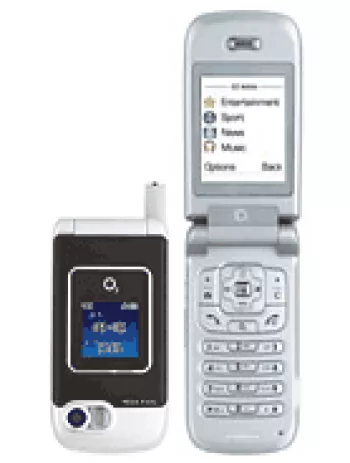
Introduction to O2 Cosmo
The O2 Cosmo was a mobile phone released in September 2006, a period that saw significant innovation and competition within the mobile phone industry. Designed to cater to business users and those seeking efficient communication tools, the O2 Cosmo stands out for its productivity features and design that included a full QWERTY keyboard and Microsoft Windows Mobile 5.0 Smartphone operating system.
Design and Build
The O2 Cosmo features a sleek and professional design, with dimensions of 111 x 62 x 13 mm and weighing 130 grams. The device is equipped with a physical QWERTY keyboard, which is a standout feature for users keen on extended typing and email communication. The build quality is solid, targeting business professionals requiring a reliable communication device with a substantial hand feel.
Display
The display of the O2 Cosmo is a 2.4-inch TFT screen that supports 65K colors. With a resolution of 240 x 320 pixels, the screen may seem modest by today's standards, but at the time, it offered a vibrant and clear interface for viewing emails, texts, and browsing the web. Despite its 25.9% screen-to-body ratio, it was considered sufficient for the professional market segment targeted by the device.
Platform
Running on Microsoft Windows Mobile 5.0 Smartphone OS, the O2 Cosmo was well-suited for business users who required access to Microsoft's productivity apps. It featured the TI OMAP 850 chipset with a 200 MHz ARM926EJ-S CPU, providing adequate power for handling typical day-to-day tasks such as emailing, contact management, and light browsing. Though not a powerhouse for heavy computation, it delivered stable performance in line with user expectations at the time.
Memory and Storage
The O2 Cosmo is equipped with 64MB of RAM and 128MB of ROM, reflecting the typical storage configurations for smartphones of its era. It included a microSD slot for expandable storage, which allowed users to carry more data, including documents and media files, a crucial feature for professionals needing to access important files on the move.
Camera Features
The phone boasts a 1.3 MP main camera, which was quite standard at the time for non-flagship models. The camera allowed users to capture photos and record videos, serving basic multimedia needs. While it did not offer advanced photography features, it was adequate for casual snap-taking and capturing moments on the go.
Battery Life
The O2 Cosmo is powered by a removable Li-Ion battery with a capacity of 1000mAh. It provided up to 200 hours of standby time and up to 4 hours of talk time, fairly decent for a device of its specifications and battery capacity at the time. The removable aspect was particularly valued, allowing users to swap batteries easily, thus extending the device's usability away from a power source, important for working professionals.
Connectivity
The O2 Cosmo supported GSM network technology and included quad-band capabilities (GSM 850/900/1800/1900), ensuring comprehensive coverage and roaming capabilities across various markets. It featured GPRS Class 10 and EDGE Class 10 for mobile data, demonstrating a good level of mobile internet connectivity for its time. For local connectivity, it had Bluetooth 2.0 and Wi-Fi 802.11b, facilitating easy data transfer and internet access.
Additional Features
Despite its primary focus on office productivity, the O2 Cosmo offered recreational features such as downloadable polyphonic and MP3 ringtones. It did not feature an FM radio or a 3.5mm headphone jack, which indicated its business-oriented target audience. The inclusion of an infrared port and miniUSB supported its versatility in connecting to a range of peripherals and devices.
Conclusion
The O2 Cosmo catered to the needs of business professionals who valued functionality and connectivity over multimedia richness. With a firm focus on delivering reliable communication and productivity features, it rounded up a decent offering for its time. While it did not remain a significant player in the evolving smartphone era post its release, it laid down some key concepts that have continued to evolve in enterprise-focused mobile devices.
Key Features of O2 Cosmo
- Compact Design: Dimensions of 111 x 62 x 13 mm and weighs 130 g.
- QWERTY Keyboard: Provides ease of typing and messaging.
- Display: 2.4-inch TFT screen with a resolution of 240 x 320 pixels.
- Operating System: Powered by Microsoft Windows Mobile 5.0 Smartphone OS.
- Storage: Comes with 64MB RAM and 128MB ROM, expandable via microSD card.
- Main Camera: 1.3 MP camera capable of taking photos and recording videos.
- Connectivity: Supports GPRS and EDGE, Wi-Fi 802.11b, Bluetooth 2.0, and Infrared.
- Expandable Memory: Dedicated slot for microSD cards.
- Battery: Removable Li-Ion battery with up to 200 hours standby and up to 4 hours talk time.
Drawbacks of the O2 Cosmo
- Only GSM network technology supported, lacks 3G/4G/5G capabilities.
- Discontinued model, no longer supported or manufactured.
- Low-resolution display with only 65K colors and a small screen-to-body ratio.
- Outdated operating system, Microsoft Windows Mobile 5.0.
- Low processing power with a 200 MHz single-core CPU.
- Limited internal memory with only 64MB RAM, although expandable via microSD.
- Basic 1.3 MP main camera with limited video capabilities.
- No selfie camera available.
- Lacks a 3.5mm audio jack for headphones.
- No GPS or positioning capabilities.
- Missing FM radio feature.
- Limited connectivity options with Wi-Fi only supporting 802.11b and USB being miniUSB.
- Limited battery life with a maximum of up to 4 hours of talk time.

View Also
More Phones
All Rights Reserved +13665 Phones © Mobilawy 2025

























